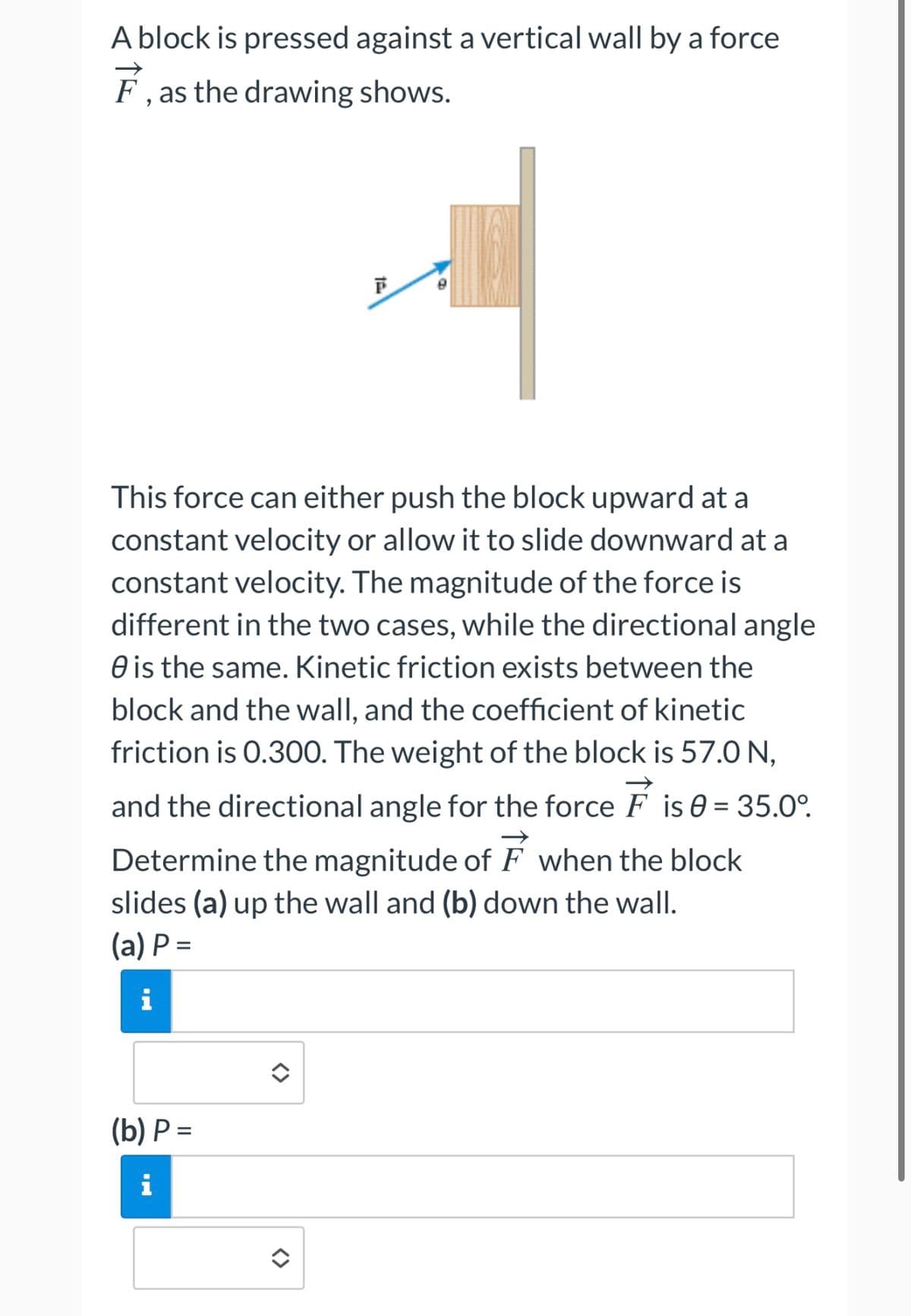A block is pressed against a vertical wall by a force F, as the drawing shows. This force can either push the block upward at a constant velocity or allow it to slide downward at a constant velocity. The magnitude of the force is different in the two cases, while the directional angle e is the same. Kinetic friction exists between the block and the wall, and the coefficient of kinetic friction is 0.300. The weight of the block is 57.0 N, and the directional angle for the force F is 0 = 35.0°. Determine the magnitude of F when the block slides (a) up the wall and (b) down the wall. (a) P = i (b) P= i î
A block is pressed against a vertical wall by a force F, as the drawing shows. This force can either push the block upward at a constant velocity or allow it to slide downward at a constant velocity. The magnitude of the force is different in the two cases, while the directional angle e is the same. Kinetic friction exists between the block and the wall, and the coefficient of kinetic friction is 0.300. The weight of the block is 57.0 N, and the directional angle for the force F is 0 = 35.0°. Determine the magnitude of F when the block slides (a) up the wall and (b) down the wall. (a) P = i (b) P= i î
Principles of Physics: A Calculus-Based Text
5th Edition
ISBN:9781133104261
Author:Raymond A. Serway, John W. Jewett
Publisher:Raymond A. Serway, John W. Jewett
Chapter5: More Applications Of Newton’s Laws
Section: Chapter Questions
Problem 61P
Related questions
Topic Video
Question

Transcribed Image Text:A block is pressed against a vertical wall by a force
F, as the drawing shows.
F
This force can either push the block upward at a
constant velocity or allow it to slide downward at a
constant velocity. The magnitude of the force is
different in the two cases, while the directional angle
e is the same. Kinetic friction exists between the
block and the wall, and the coefficient of kinetic
friction is 0.300. The weight of the block is 57.0 N,
and the directional angle for the force F is 0 = 35.0°.
Determine the magnitude of when the block
slides (a) up the wall and (b) down the wall.
(a) P=
i
(b) P=
i
Expert Solution
This question has been solved!
Explore an expertly crafted, step-by-step solution for a thorough understanding of key concepts.
This is a popular solution!
Trending now
This is a popular solution!
Step by step
Solved in 3 steps with 3 images

Knowledge Booster
Learn more about
Need a deep-dive on the concept behind this application? Look no further. Learn more about this topic, physics and related others by exploring similar questions and additional content below.Recommended textbooks for you

Principles of Physics: A Calculus-Based Text
Physics
ISBN:
9781133104261
Author:
Raymond A. Serway, John W. Jewett
Publisher:
Cengage Learning

Principles of Physics: A Calculus-Based Text
Physics
ISBN:
9781133104261
Author:
Raymond A. Serway, John W. Jewett
Publisher:
Cengage Learning